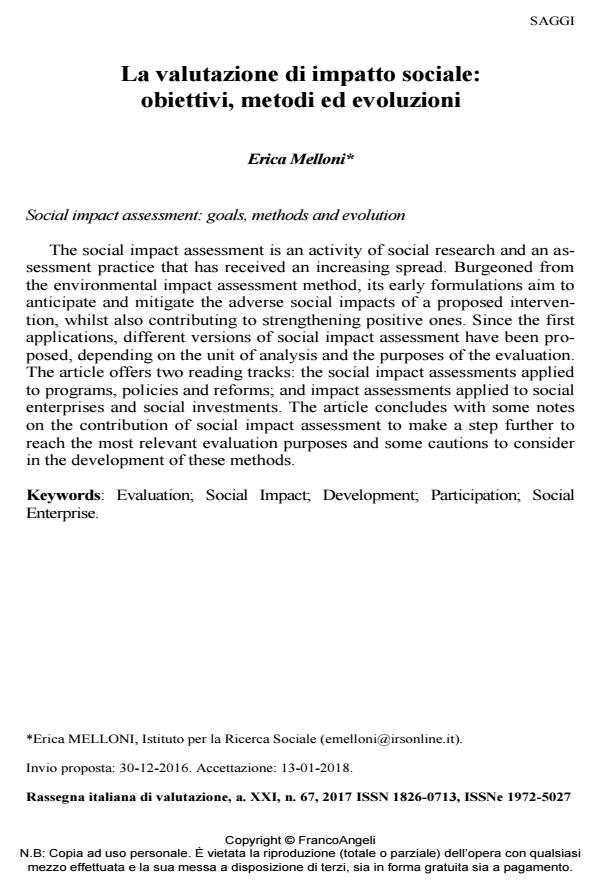La valutazione di impatto sociale: obiettivi, metodi ed evoluzioni
Titolo Rivista RIV Rassegna Italiana di Valutazione
Autori/Curatori Erica Melloni
Anno di pubblicazione 2018 Fascicolo 2017/67
Lingua Italiano Numero pagine 23 P. 101-123 Dimensione file 550 KB
DOI 10.3280/RIV2017-067007
Il DOI è il codice a barre della proprietà intellettuale: per saperne di più
clicca qui
Qui sotto puoi vedere in anteprima la prima pagina di questo articolo.
Se questo articolo ti interessa, lo puoi acquistare (e scaricare in formato pdf) seguendo le facili indicazioni per acquistare il download credit. Acquista Download Credits per scaricare questo Articolo in formato PDF

FrancoAngeli è membro della Publishers International Linking Association, Inc (PILA)associazione indipendente e non profit per facilitare (attraverso i servizi tecnologici implementati da CrossRef.org) l’accesso degli studiosi ai contenuti digitali nelle pubblicazioni professionali e scientifiche
The social impact assessment is an activity of social research and an assessment practice that has received an increasing spread. Burgeoned from the environmental impact assessment method, its early formulations aim to anticipate and mitigate the adverse social impacts of a proposed intervention, whilst also contributing to strengthening positive ones. Since the first applications, different versions of social impact assessment have been proposed, depending on the unit of analysis and the purposes of the evaluation. The article offers two reading tracks: the social impact assessments applied to programs, policies and reforms; and impact assessments applied to social enterprises and social investments. The article concludes with some notes on the contribution of social impact assessment to make a step further to reach the most relevant evaluation purposes and some cautions to consider in the development of these methods.
Parole chiave:Evaluation; Social Impact; Development; Participation; Social Enterprise
- La valutazione di impatto nel contesto socio-educativo: un ibrido tra evaluation, assessment e measurement? Enrico Orizio, katia Montalbetti, in RIV Rassegna Italiana di Valutazione 77/2022 pp.33
DOI: 10.3280/RIV2020-077003
Erica Melloni, La valutazione di impatto sociale: obiettivi, metodi ed evoluzioni in "RIV Rassegna Italiana di Valutazione" 67/2017, pp 101-123, DOI: 10.3280/RIV2017-067007